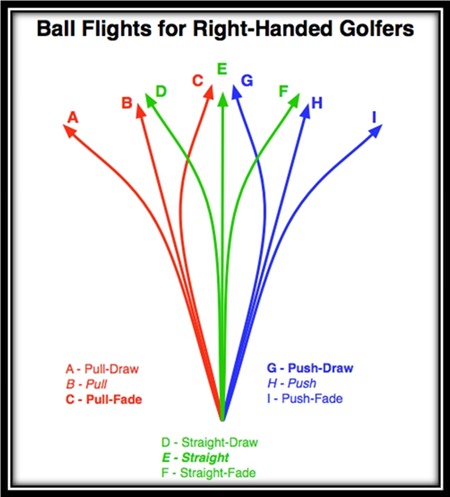I blame the crash of ’87. Apart from it costing me my job, the resulting downturn saw me affected by the golfing bug and when it bit, it really hit home. Soon, hour upon hour spent hitting golf balls had me wondering over cause and effect. Not the calluses that had developed after spending six intensive months on the practise fairway, I knew what had caused those. Rather, I wanted to understand the correlation between the golf swing and ball-flight. But most of all, I wanted to become a good ball-striker.
Ben Hogan is generally regarded as the best ball-striker the game has ever known. His book, first published in 1957, Five Lessons: The Modern Fundamentals of Golf, is arguably the most widely read golf instruction book ever written. It is currently in its 64th edition and still maintains a top or near-top position on Amazon. com golf book rankings.
The book explains in detail the grip, stance and swing as Hogan believed they should be. These fundamentals went on to gain world-wide acceptance as the basis of swing instruction from that time until, well, now. Much of today’s teaching, whether by local instructors or widely acclaimed swing-gurus, still follows Hogan’s fundamentals. Back then, when I was doing nothing but hitting golf balls, Mr Hogan’s book became my bible.
It wasn’t until I was well into my third reading that I started to understand what my club pro was on about. I’m not saying teaching pros aren’t up to it, far from it, but I find the workings of the golf swing so complicated that it wasn’t until I understood Hogan that it all started to make sense. You could do a lot worse than spend the price of a few golf balls and obtain a copy.
Apparently, some 85% of golfers swing on an out-to-in swing path, causing the ball to slice. No matter how hard I tried to counter this, whenever I engaged a full-blooded swing with anything from a medium iron through to driver, I too would send the ball on a huge left to right curve – then I read Hogan.
Aside from trajectory and club-head speed, ball flight depends mainly on clubface alignment and the path on which the club travels relative to the target line. It is these two factors – clubface alignment and swing-path – we need understand to improve ball-striking.

Clubface alignment will be closed (RED), square (GREEN) or open (BLUE) to target line at the moment of impact, and will determine the ball’s initial direction only.
The direction of the swing-path, relative to the target line, soon takes over to determine where the ball ultimately ends up. Note: an exaggerated fade is a slice, an exaggerated draw is a hook.
Where clubface alignment matches swing-path, the result is a straight shot, as in B, E and H.
Swing-paths can be broadly described as:
Out-to-in: Club approaches the ball from outside the target line and travels across the line to the inside after impact – (C, F, I).
In-to-in: Club approaches the ball from inside the target line and returns to the inside after impact – (B, E, H).
In-to-out: Club approaches the ball from inside the target line and continues across the line to the outside after impact – (A, D, G).
The most common ball-flight in golf is C, or variations of it. The worst, in terms of negative impact on par, is probably A followed by D, due to the greater distance they will travel offline (draws/hooks go further than fade/slices).
Those seeking to become better ball-strikers should develop an in-to-in or an in-to-out swing path, leading to the equivalent of E or G above. Ball-flight G tends to be favoured as E is nigh-on impossible to achieve with consistency. An alternative to G favoured by some (Nicklaus and modern-day Woods) is the power-fade – a left-of-centre E with a small left-to-right tail. Whilst this limits the amount of ground run, thus increasing control, it is generally the preserve of those who have the power to generate huge air-time.
In assessing your own swing, and where you want to take it, you need be aware of any physical limitations that may frustrate your ambitions. Secondly, before any change is made a full review of grip and stance, as per Hogan or your local instructor, should be undertaken. Third, to make a genuine swing change requires a huge amount of time and effort, and instruction from a competent professional instructor – a certified one.
A general rule of thumb for me was one minute spent with the pro needed one hour on the range bedding the lesson into muscle-memory. A productive thirty-minute lesson therefore justified thirty hours of hard practise – thus the calluses. There are no short-cuts to better ball-striking.
More next week!
Golfnutter




